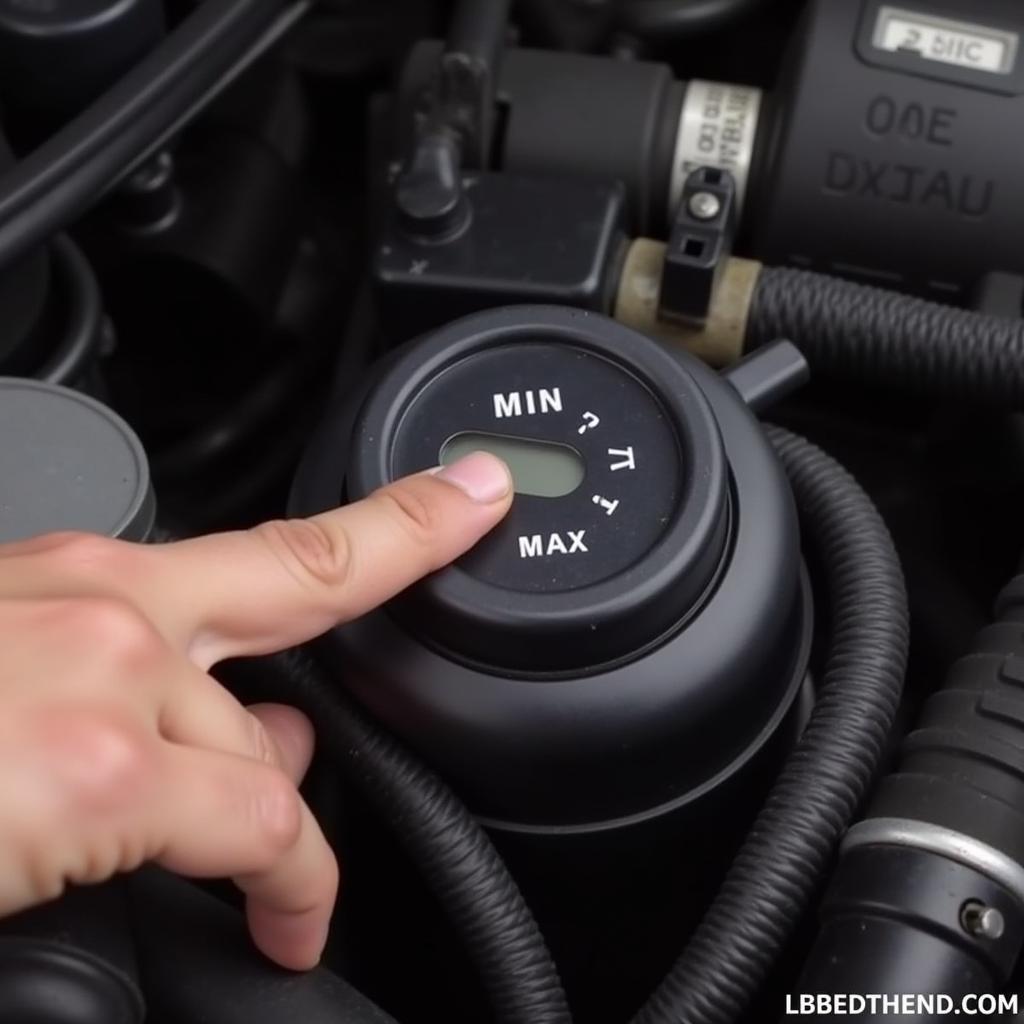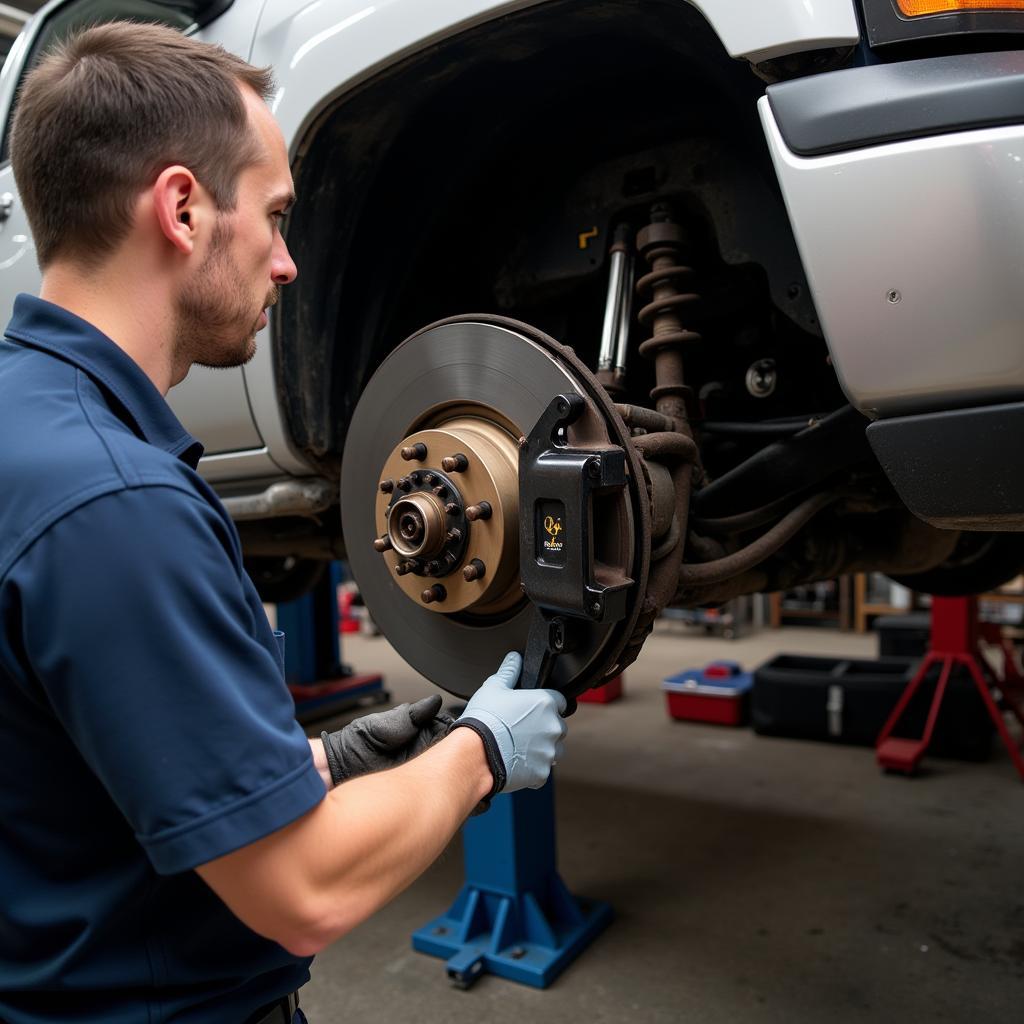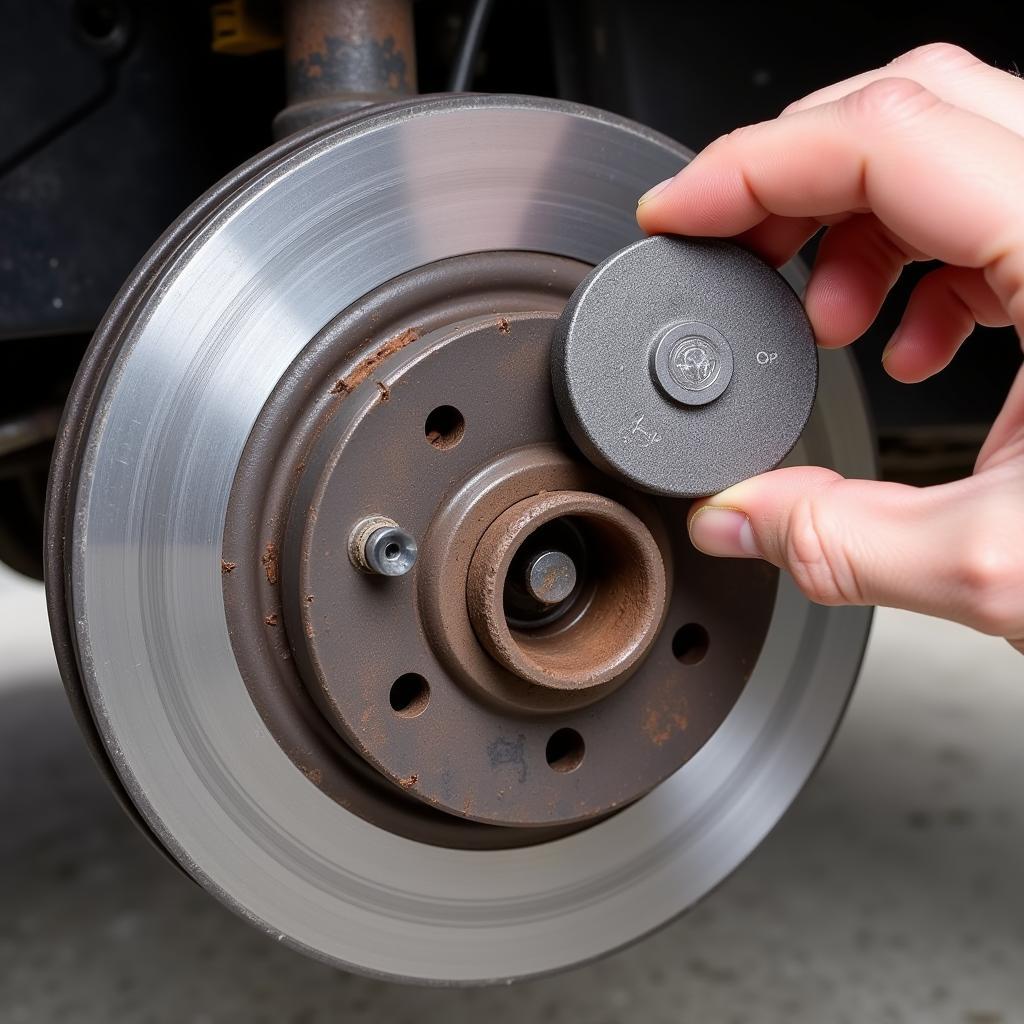The brake warning light on your dashboard is a crucial safety feature, and when it illuminates in your 2009 Chevy Silverado 2500HD, it’s essential to address the issue promptly. This warning light can indicate a range of problems, from low brake fluid to serious mechanical failures. This comprehensive guide will walk you through the common causes of a brake warning light in a 2009 Silverado 2500HD and provide potential solutions to help you get back on the road safely.
Understanding Your Silverado’s Brake System
Before diving into the specifics, it’s helpful to understand the basics of your truck’s braking system. The 2009 Silverado 2500HD utilizes a hydraulic system, meaning it uses brake fluid pressure to activate the calipers and push the brake pads against the rotors, effectively slowing down or stopping the vehicle.
Common Causes of a Brake Warning Light
1. Low Brake Fluid
Why it matters: Brake fluid is the lifeblood of your Silverado’s braking system. If the fluid level is low, it usually indicates a leak or worn-down brake pads.
What to do:
- Check the brake fluid reservoir. Locate the reservoir under the hood (refer to your owner’s manual for the exact location) and check the fluid level.
- Add brake fluid if necessary. If the level is low, carefully add the recommended brake fluid until it reaches the “MAX” line.
- Inspect for leaks. Thoroughly examine the brake lines, hoses, and connections for any signs of leakage. Look for wet spots or drips.
 Checking the brake fluid reservoir in a Chevy Silverado
Checking the brake fluid reservoir in a Chevy Silverado
2. Worn Brake Pads
Why it matters: Brake pads are designed to wear down over time. When they become too thin, they trigger the warning light.
What to do:
- Inspect the brake pads. If you’re comfortable with basic car maintenance, you can visually inspect the brake pads by looking through the spaces between the wheel spokes. Look for a thin lining on the pads.
- Consider professional inspection. If you’re unsure or the pads appear worn, take your Silverado to a trusted mechanic for a thorough brake inspection.
3. Faulty Brake Caliper
Why it matters: Brake calipers house the pistons that push the brake pads. A sticking or seized caliper can cause uneven braking and activate the warning light.
What to do:
- Check for uneven wear. Uneven wear on your brake pads, pulling to one side while braking, and a burning smell are signs of a potentially faulty caliper.
- Seek professional help. Diagnosing and repairing brake calipers often require specialized tools and expertise. Consult a qualified mechanic.
4. ABS Issue
Why it matters: The Anti-lock Braking System (ABS) prevents wheel lockup during hard braking. A malfunctioning ABS system can trigger the brake warning light.
What to do:
- Look for additional warning lights. Often, a dedicated ABS warning light will illuminate alongside the brake warning light if there’s an issue with the ABS system.
- Get a diagnostic scan. A professional mechanic can use a scan tool to retrieve ABS-related error codes, pinpoint the problem, and recommend the necessary repairs.
“Ignoring a brake warning light can have serious consequences. At the first sign of trouble, it’s crucial to address the issue to ensure your safety and the safety of others on the road.” – John Davis, Senior Automotive Technician.
Additional Tips
- Don’t ignore the light! Addressing brake issues promptly can prevent more costly repairs down the line.
- Use high-quality brake fluid. Always use the recommended brake fluid type specified in your owner’s manual.
- Regular maintenance is key. Schedule routine brake inspections and fluid flushes to keep your braking system in top condition.
 Mechanic inspecting a vehicle's brake system
Mechanic inspecting a vehicle's brake system
Conclusion
A glowing brake warning light in your 2009 Chevy Silverado 2500HD is a clear signal that requires your immediate attention. While some causes, such as low brake fluid, might seem minor, ignoring them can lead to significant safety hazards and potentially more expensive repairs in the long run. If you’re unsure about diagnosing or fixing the issue yourself, it’s always best to seek the expertise of a qualified mechanic to ensure your Silverado’s braking system is in optimal working order.

